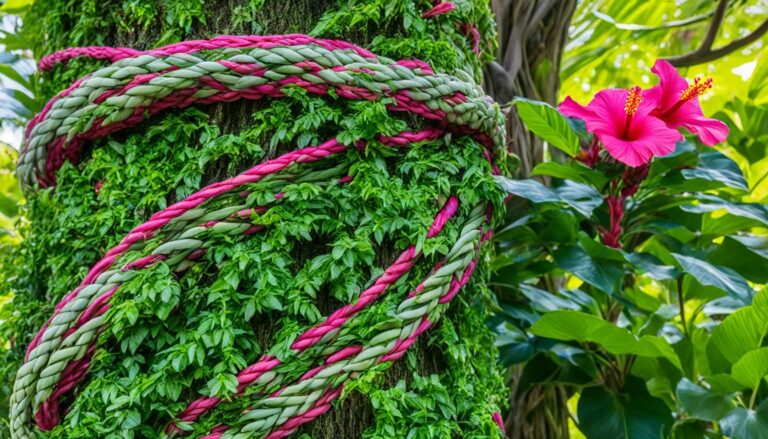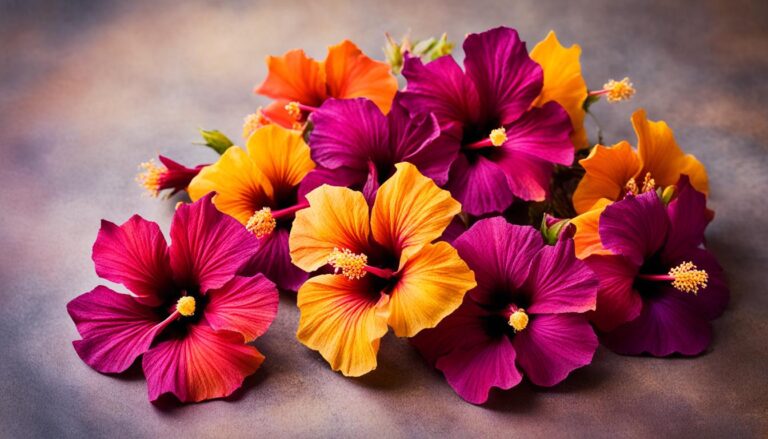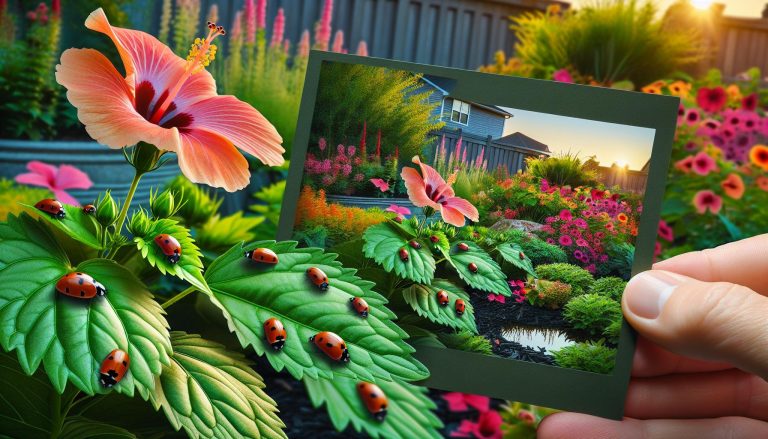White Flies on Hibiscus: Identify, Control, and Prevent Infestations
As a gardening enthusiast, I’ve encountered my fair share of plant pests. But few are as persistent and frustrating as white flies on hibiscus. These tiny, snow-white insects can quickly infest your beautiful hibiscus plants, causing damage and potential death if left unchecked.
Have you noticed a flurry of small white insects flying up when you brush against your hibiscus? Or perhaps you’ve seen a sticky substance on the leaves or yellowing foliage? These are telltale signs of a white fly infestation. Don’t panic! While these pests can be challenging to control, there are effective methods to combat them and restore your hibiscus to its former glory.
Understanding White Flies on Hibiscus
White flies on hibiscus are tiny, sap-sucking insects that can cause significant damage to these beautiful plants. I’ll explain how to identify these pests and their life cycle to help you better understand and manage infestations.
Identifying White Flies
White flies are small, winged insects measuring about 1/16 inch long. They’re typically found on the undersides of hibiscus leaves in clusters. When disturbed, they flutter up in a cloud of tiny white specks. Look for these key identifiers:
- Triangular-shaped wings covered in a white, waxy powder
- Yellow or light green bodies beneath the wings
- Sticky honeydew residue on leaves and nearby surfaces
- Sooty mold growth on honeydew-covered areas
- Yellowing, wilting, or distorted leaves
Life Cycle of White Flies
The white fly life cycle consists of four stages: egg, nymph, pupa, and adult. Understanding this cycle is crucial for effective control:
- Egg stage: Females lay 200-400 tiny, oval eggs on leaf undersides
- Nymph stage: Eggs hatch in 5-10 days, producing crawling nymphs
- Pupa stage: Nymphs become immobile and develop into pupae
- Adult stage: Adults emerge after 10-14 days, ready to reproduce
White flies complete their life cycle in 3-4 weeks under optimal conditions. This rapid reproduction rate allows populations to explode quickly, making early detection and intervention essential for protecting hibiscus plants.
Damage Caused by White Flies to Hibiscus Plants
White flies can inflict significant damage on hibiscus plants, compromising their health and appearance. These tiny pests feed on plant sap, causing a range of issues that can lead to the decline of the plant if left unchecked.
Visual Signs of Infestation
White fly infestations on hibiscus plants produce several visible symptoms:
- Yellowing leaves: Chlorosis occurs as white flies drain nutrients from the plant.
- Sticky residue: Honeydew secreted by white flies coats leaves and stems.
- Sooty mold: Black fungal growth develops on honeydew-covered surfaces.
- Leaf distortion: Severely affected leaves may curl, wrinkle, or become misshapen.
- Premature leaf drop: Heavy infestations can cause leaves to fall off prematurely.
- Stunted growth: Reduced photosynthesis and nutrient loss slow plant development.
- Weakened immune system: Constant stress makes plants more susceptible to diseases.
- Reduced flowering: Nutrient depletion leads to fewer and smaller blooms.
- Structural damage: Sustained attacks can cause branch dieback and plant deformities.
- Decreased vigor: Overall plant health declines, affecting growth and resilience.
- Transmission of plant viruses: White flies can spread harmful pathogens between plants.
- Death: In extreme cases, severe infestations can kill hibiscus plants entirely.
Natural Prevention Methods for White Flies
Natural prevention methods offer effective, eco-friendly solutions to protect hibiscus plants from white fly infestations. These strategies focus on creating an environment that’s inhospitable to white flies while promoting overall plant health.
Companion Planting Strategies
Companion planting is a powerful tool in deterring white flies from hibiscus plants. I’ve found that certain plants effectively repel these pests:
- Marigolds: Their strong scent confuses and deters white flies.
- Nasturtiums: Act as trap crops, attracting white flies away from hibiscus.
- Basil: Its aromatic oils repel various insects, including white flies.
- Mint: Strong-smelling herb that discourages white fly infestations.
- Chives: Emit sulfur compounds that repel white flies and other pests.
Planting these companions around hibiscus creates a natural barrier against white flies, reducing the likelihood of infestations.
Maintaining Plant Health
A healthy hibiscus plant is more resilient to white fly attacks. Here’s how I maintain optimal plant health:
- Proper watering: Consistent, deep watering encourages strong root development.
- Balanced fertilization: Use a balanced, slow-release fertilizer to provide essential nutrients.
- Regular pruning: Remove dead or diseased branches to improve air circulation.
- Adequate sunlight: Ensure hibiscus receives 6-8 hours of direct sunlight daily.
- Soil management: Maintain well-draining, nutrient-rich soil with a pH between 6.0-6.5.
- Mulching: Apply a 2-3 inch layer of organic mulch to retain moisture and suppress weeds.
- Avoid overcrowding: Space plants properly to prevent stress and improve air circulation.
By implementing these plant health practices, hibiscus plants become more resistant to white fly infestations and other pest problems.
Organic Treatment Options for White Fly Infestations
Organic treatments offer effective solutions for controlling white fly infestations on hibiscus plants without harming beneficial insects or the environment. These methods provide safe alternatives to chemical pesticides, maintaining the natural balance of your garden ecosystem.
Neem Oil and Insecticidal Soaps
Neem oil and insecticidal soaps are powerful organic options for treating white fly infestations on hibiscus plants. Neem oil, derived from the neem tree, disrupts the life cycle of white flies by interfering with their feeding and breeding patterns. To apply neem oil:
- Mix 2 tablespoons of neem oil with 1 gallon of water
- Add 1 teaspoon of mild liquid soap as an emulsifier
- Spray the solution on all plant surfaces, including leaf undersides
- Reapply every 7-14 days until the infestation subsides
Insecticidal soaps work by breaking down the protective outer layer of white flies, causing dehydration. For effective use:
- Choose a commercial insecticidal soap or make your own with 1 tablespoon of mild liquid soap per quart of water
- Test the solution on a small area of the plant to ensure no adverse reactions
- Spray thoroughly, covering all plant surfaces
- Repeat applications every 5-7 days as needed
Beneficial Insects as Natural Predators
Introducing beneficial insects to your garden creates a natural defense against white fly infestations on hibiscus plants. These predatory insects help maintain a balanced ecosystem by controlling pest populations. Effective natural predators include:
- Ladybugs: Voracious consumers of white flies and their eggs
- Lacewings: Both adults and larvae feed on white flies
- Parasitic wasps: Lay eggs inside white fly nymphs, controlling populations
- Bigeyed bugs: Generalist predators that consume various pests, including white flies
To attract and maintain beneficial insect populations:
- Plant diverse flowering plants to provide nectar and pollen sources
- Avoid broad-spectrum insecticides that harm beneficial insects
- Create shelter areas with native plants and ground covers
- Purchase beneficial insects from reputable suppliers for quicker results
By incorporating these organic treatment options, I can effectively manage white fly infestations on hibiscus plants while promoting a healthy, balanced garden ecosystem.
Chemical Control Methods for Severe Infestations
In cases of severe white fly infestations on hibiscus plants, chemical control methods may be necessary. These options are typically considered as a last resort when natural and organic treatments have proven ineffective.
Choosing the Right Insecticide
Selecting an appropriate insecticide is crucial for effectively combating white flies on hibiscus. I recommend systemic insecticides containing imidacloprid or acetamiprid, as they’re absorbed by the plant and distributed throughout its tissues. These products target sap-feeding insects like white flies without harming beneficial pollinators. Alternatively, contact insecticides with pyrethrins or pyrethroids offer quick knockdown of adult white flies. Always opt for products specifically labeled for use on hibiscus and against white flies to ensure safety and efficacy.
Proper Application Techniques
Proper application of insecticides is essential for maximizing their effectiveness against white flies:
- Timing: Apply insecticides early in the morning or late in the evening when white flies are less active.
- Coverage: Thoroughly coat both upper and lower leaf surfaces, as white flies typically congregate on the undersides of leaves.
- Frequency: Follow the product label instructions for application intervals, typically every 7-14 days.
- Safety: Wear protective gear, including gloves and a mask, when applying chemical insecticides.
- Environmental considerations: Avoid spraying on windy days or when rain is forecast within 24 hours.
By adhering to these application techniques, I ensure the insecticide reaches its target effectively while minimizing environmental impact and potential harm to beneficial insects.
Preventing Future White Fly Outbreaks on Hibiscus
Preventing future white fly outbreaks on hibiscus requires a proactive approach. I’ll outline key strategies to keep these pests at bay and maintain healthy hibiscus plants.
Regular Monitoring and Inspection
Regular monitoring is crucial for early detection of white flies on hibiscus. I inspect my plants at least twice a week, focusing on the undersides of leaves where white flies typically congregate. During these checks, I look for:
- Adult white flies
- Sticky honeydew on leaves
- Sooty mold growth
- Yellowing or wilting leaves
Early detection allows for prompt intervention, preventing small infestations from becoming major outbreaks. I use a magnifying glass to spot eggs and nymphs, which are often overlooked during casual observations.
Quarantine Procedures for New Plants
Implementing strict quarantine procedures for new plants is essential in preventing white fly infestations. When introducing new hibiscus plants to my garden or collection, I:
- Isolate new plants for 2-3 weeks
- Inspect thoroughly for signs of pests or diseases
- Treat preventively with neem oil or insecticidal soap
- Monitor closely for any emerging issues
This quarantine period helps prevent the introduction of white flies and other pests to established hibiscus plants. I never skip this step, even when acquiring plants from reputable sources.
Conclusion
White flies on hibiscus can be a persistent problem but they’re not insurmountable. With the right approach combining prevention identification and control methods you can keep these pests at bay. Remember early detection and swift action are key. Whether you opt for natural solutions or chemical treatments always prioritize the health of your plants and the environment. By staying vigilant and implementing the strategies I’ve outlined you’ll be well-equipped to protect your beautiful hibiscus plants and enjoy their vibrant blooms year after year.







